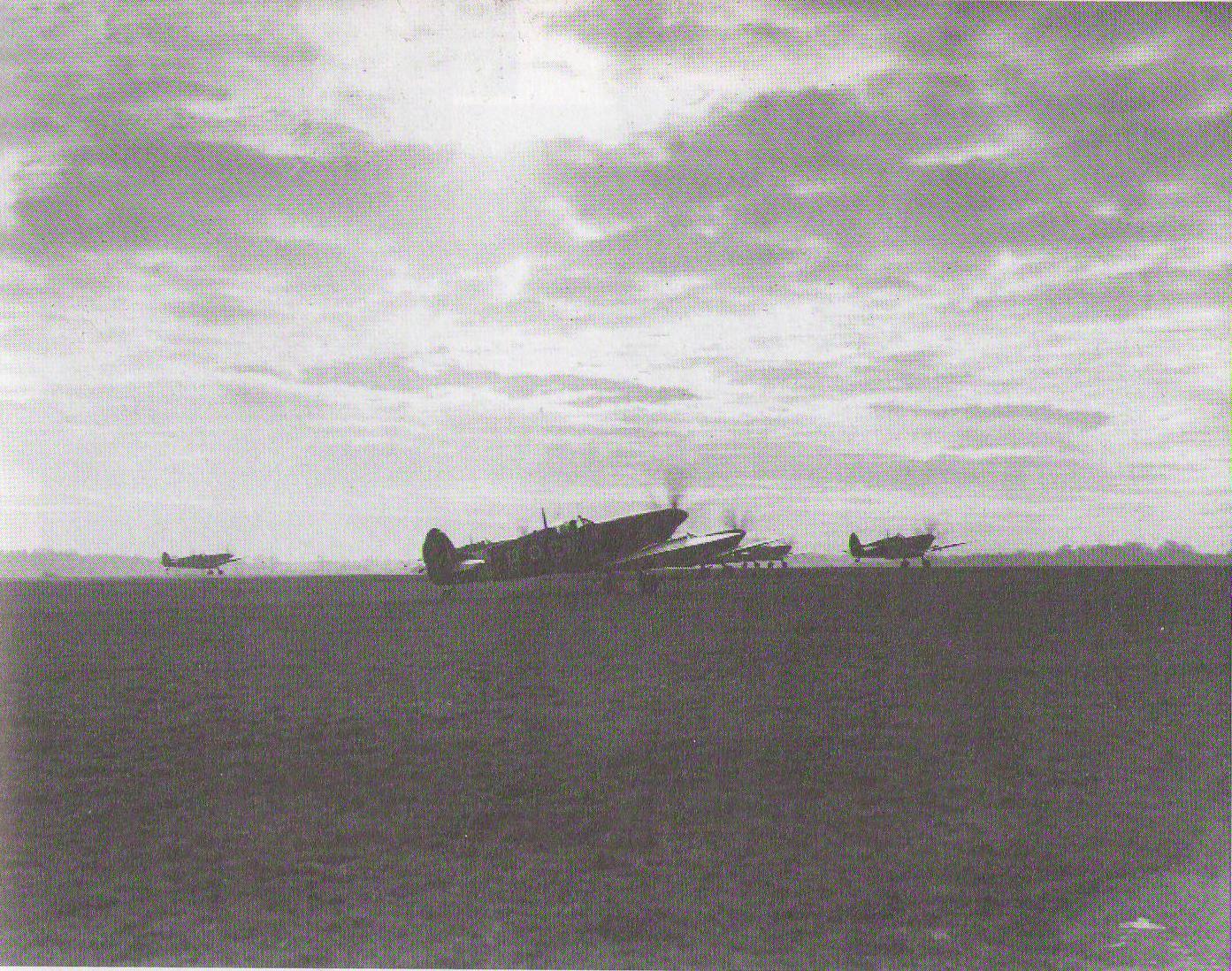Image: First light August 13, 2010
Author: Beach Combing | in : Contemporary , trackback Beachcombing has recently being putting together a series of photographs for his WIBT (‘Wish I’d been there’) series. He decided that he would open this series with an extraordinary shot from the Battle of Britain that teases him out of thought.
Beachcombing has recently being putting together a series of photographs for his WIBT (‘Wish I’d been there’) series. He decided that he would open this series with an extraordinary shot from the Battle of Britain that teases him out of thought.
Four Spitfires are taking off in the morning from an airfield: the early light and the distant trees are unmistakably English. The propellers are whirling and the planes are caught between turf and air.
If their pilots were typical of those fighting in the summer of 1940 – seventy years ago this month – their average age would have been twenty. One of the four would have been foreign: most likely from the Dominions or perhaps a pissed off Eastern European looking to even the score (‘Poles may fight for other countries, but they die for Poland!’). And these four Spitfire pilots would have had a life span measured in fighting flying hours – about eighty seven – before becoming, in the words of one modern writer, ‘a wall of flame’.
The four planes will have been going on a sweep to keep enemy reconnaissance at bay or racing up to chip away at clouds of German bombers, sometimes outnumbered by as many as twenty to one.
As the Spitfire pilots flew towards the ‘bandits’ they would have looked and seen – and this comes up again and again in pilots’ memories – a familiar English countryside stretching out thousands of feet beneath them with its impossible patchwork of fields and hedges. That countryside would have been the last thing that many of them ever saw.
There are a score of Battle of Britain legends.
So Fighter Command’s ‘victory’ was a question of survival rather than triumph: sixty years ago Kesselring put this in the starkest terms in his memoirs.
The role of the more numerous Hawker Hurricane, arguably Britain’s most efficient fighter, has been subsumed by the talismanic Spitfire.
The Spitfires were not Britain’s last line of defence, that honour fell to the Royal Navy and the UK’s mauled armies
Spitfire ‘kills’ were exaggerated…
But even though there is something in all of these statements Churchill’s clunking ‘pseudo-Augustan’ prose gets much closer to the mythic ‘truth’ – a ‘truth’ that he helped to create.
May it not also be that the cause of civilization itself will be defended by the skill and devotion of a few thousand airmen? There never has been, I suppose, in all the world, in all the history of war, such an opportunity for youth. The Knights of the Round Table, the Crusaders, all fall back into the past – not only distant but prosaic; these young men, going forth every morn to guard their native land and all that we stand for, holding in their hands these instruments of colossal and shattering power, of whom it may be said that Every morn brought forth a noble chance And every chance brought forth a noble knight, deserve our gratitude.
Here then are a band of airborne knights ‘going forth’ in what is surely the finest Spitfire photo of all.
Beachcombing came across it several years ago in Geoffrey Wellum’s First Light – his exceptional Spitfire memoirs. Wellum wrote ‘This is a wonderful picture and very apt [given the title of his book]. I find it moving’.
Wellum was eighteen in the summer of 1940 and that he was moved in 2003 should mean something in 2010.
The photo is credited to the Imperial War Museum and Beachcombing is trying to hunt down the original. (Any help please contact drbeachcombingATyahooDOTcom).
He hopes that this poor scan will give some idea of the picture’s immense power!


